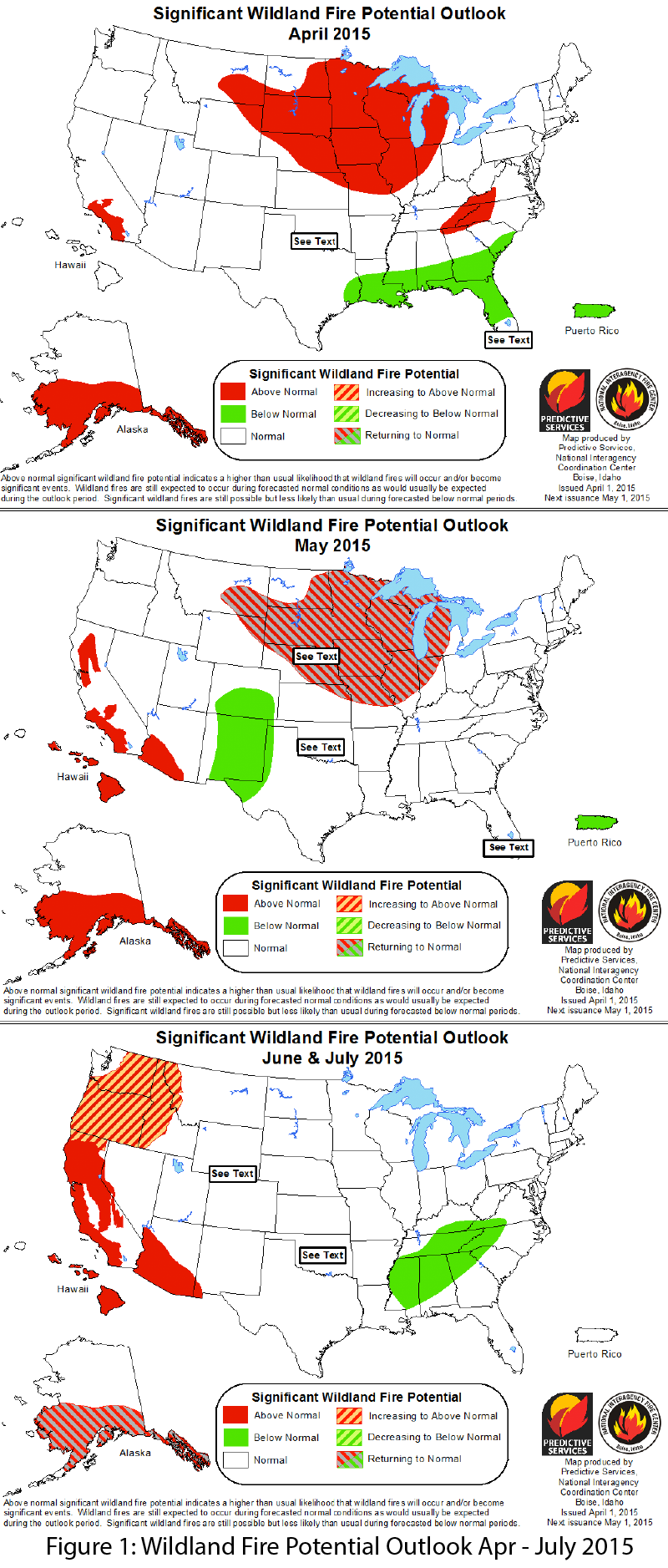Spring Signals the Start of Wildfire Season for the Southwest
A version of this post was also published in the April 2015 Southwest Climate Outlook
Flowers are blooming and trees have sprouted green leaves, signs that spring is in full swing across the Southwest and that, despite a verdant desert, wildfire season is upon us. The outlook for this wildfire season forecasts near-average wildfire activity for much of Arizona and New Mexico.
Several factors, including gradually increasing temperatures, a decreasing probability of precipitation, and increasing wind, create perfect climatological conditions for wildfire. From a climate perspective, spring is also a transition season, when the winter storm track lifts north and the sub-tropical high pressure system to the south starts to build north, both in response to an increasing sun angle and increased heating of the Northern Hemisphere. The retreat of the winter storm track and advancement of the sub-tropical ridge is generally not a clean transition, but a battle of cool and warm air masses that plays out over weeks, if not months. In this battle, the atmospheric pressure gradient tightens and wind speeds increase in response, creating conditions that can cause wildfires to grow quickly. In Arizona and New Mexico, hot, dry, and windy conditions are often the norm in late spring, and not surprisingly, this forms the heart of wildfire season for this part of the Southwest.
Spring wildfire activity can be modulated by conditions from the previous winter, the previous summer, or even several years prior. Long-term drought conditions can stress and kill trees, increasing fire risk, but wet winters and strong monsoons can also drive increased fire risk. Fast-growing vegetation like grasses and annuals grow quickly during wet periods, then dry out and become fine fuels for subsequent wildfire seasons.
The current wildfire outlook for the southwest notes that near-average wildfire activity is expected for much of Arizona and New Mexico, due largely to some improvements in drought conditions across the region, including above average precipitation last summer and into the early winter season. But this precipitation also spurred on new vegetation growth, increasing the risk of wildfires across southern Arizona this spring as this vegetation senesces and becomes flammable. Fire managers will be watching these emergent conditions carefully, especially as dry and windy conditions create short-term windows of elevated fire risk.

Image Source - National Interagency Coordination Center

Image Source - National Interagency Coordination Center

